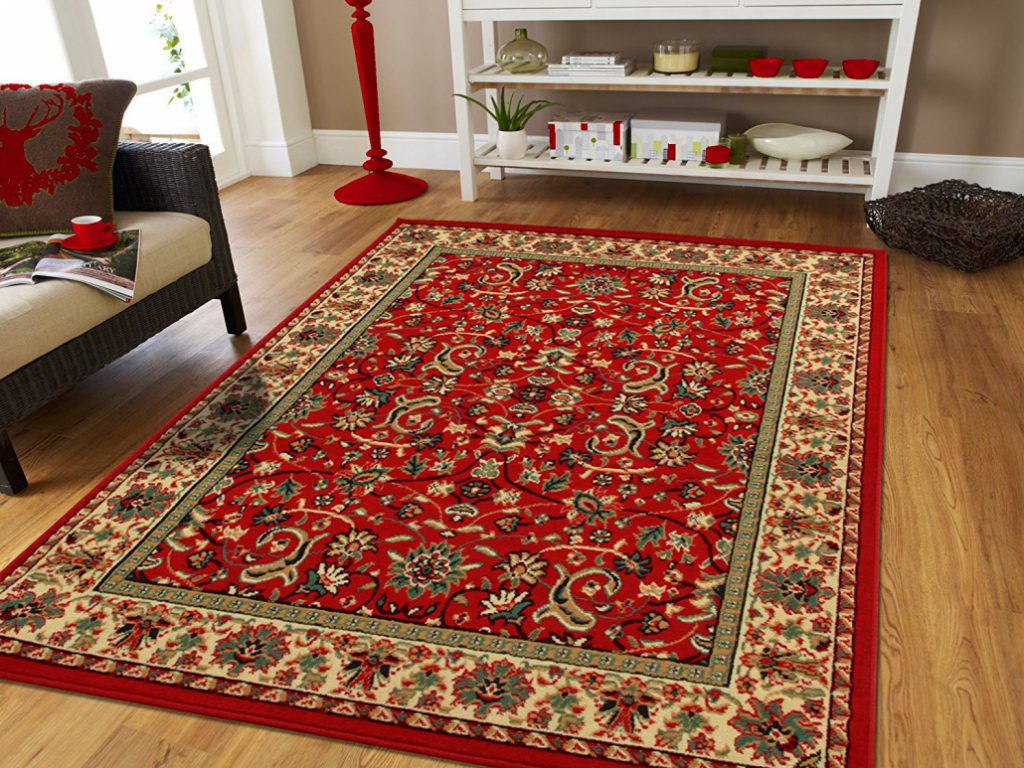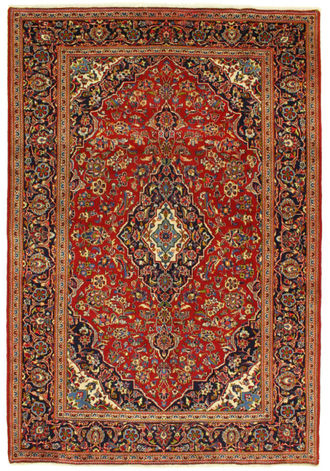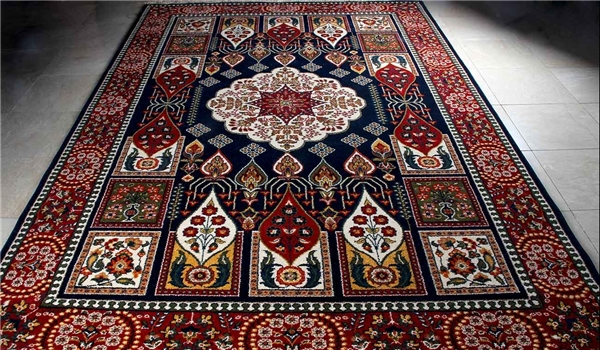
Identify possible carpet
defects
When a carpet is of high artistic and economic value, it is free from
any defects and defects, and this is not the case unless all of the major
contributing factors in the texture are of high quality and the carpet weaver
has high scientific and experimental skill. And to know that the slightest
defect in any of the textural factors, from the raw material to the tweezers and
weaving tools, makes a lot of noise and even irreparable damage to the carpet.
Possible defects in the carpet are divided into the following according to their
origin.
1- Defects related to wool, cotton and silk raw materials:
As previously explained, wool and cotton and silk are the main factors in carpet
weaving, and in light of the previous discussion of the properties of each of
the above discussed, it should be noted that the consumption of dry wool and
untreated cotton and mushrooms and silk Gypsum should be avoided. At the same
time, the color of the creams should also be taken into account, avoiding the
use of creams that are colored in ink, and should also pay attention to the
quality of dyeing of creams, and avoid the use of supersaturated creams
separately.
2. Defects related to side effects:
As previously mentioned, tools and designs have direct and indirect
effects on the carpet, and the slightest flaw in each of the above carries a
great deal of damage to the carpet.
For example, being unhealthy causes tilt, rebound, and inappropriate mapping
causes misalignment and inappropriate shoulder blade rupture, and working with a
knife or knife slows down tissue speed, The use of slow and rough scissors will
chew the carpet.
3- Carpet maintenance defects:
Just as carpet weaving and the use of raw materials suitable for carpet weaving
are of great importance. Maintaining a woven carpet is also important. . At the
same time beware of complications such as carpeting, as carpeting will cause
carpeting and corrosion.
Possible imperfections in the carpet include:
1- Spelling:
If the roles and pictures are not in their true form, that is to say, the roles
and pictures are disrupted and there is no symmetry to each other and the carpet
dimensions, we say that there is a misconception.
reasons:
1- Inaccurate map design and inaccuracy of design
2- Inaccurate weaving and incorrect reading of the map and moving the nodes
3. Inaccuracy in grip (filling and thinning of grooves)
4- Inaccuracy in polishing and inconsistency in combing the carpet
5. Inaccuracies in the selection of raw materials are appropriate, for example,
the use of creams of varying thickness in the carpet, which may be misleading.
2- Backyard (simple weaving):
The motifs and figures on the carpet should be well-balanced and harmonious with
each other. If the flowers are not symmetrical, they are dense in some parts of
the rug and vice versa. Be too much. In this case, parts in the text or in the
margins are left unnecessarily redundant and are left in a state of privacy.
reasons:
1- Failure to properly map
2- Moving colors and capturing colors without sufficient knowledge of the
correct color combination
3. Failure to adhere to the principles of clairvoyance and the protection of
claws
Carpet hollow or hollow:
Reducing the density of carpets is said to be due to osteoporosis. As mentioned
in the density discussion, the density of carpets varies according to the number
of rugs, and the higher the number of knots per unit area, the higher the
density of the rug, which is the rug’s density. If, for any reason, the number
of knots is reduced, the density of the carpet will also decrease and there will
be an osteoporosis. The causes of osteoporosis include:
1- Reduce the consumption of cream and increase the consumption of yarn and
yarn.
2. Using the pair node.
3. Using the buckle knit.
Empty carpets do not have the required strength and durability and have a very
short shelf life and are of low economic value.
4- Tear:
Sometimes the carpets, especially their margins, can be torn, which
may cause ruptures in the head or in woven parts. Causes of rupture include:
1- Using inappropriate tools: For example, the use of damaged cheeks with sharp
teeth will result in rupture of the cords.
2- Lack of skill in using the cheekbones and shoulders: If the weaver does not
know the correct method of weaving and does not use the cheekbone properly,
there will be a possibility of tearing the bars.
3. Over-tightening of cords: As a result of over-tightening, the cords lose
their resistance and are torn.
4. Inappropriate use of raw materials (will be explained in the bursting issue).
5- The length of time the tissue will rot will cause the cavities to rot.
6- Tearing the rug with sharp tools by other people and children is another
reason for rupture.
5- Bleeding or Staining:
In some carpets, the color of the original background and the eaves are changed
in some parts or even a few ridge, and after weaving a few ridge, it returns to
its original color. This color change is said to be a strip seen in one or more
rug carpets.
The flaw of the carpet is due to the lack of proper raw materials and the other
cause of this flaw is the inaccuracy in the dyeing stage of the cream and the
non-uniform dyeing of the dyes. The margins change and the two colors are quite
evident.
6. Casey:
This is called case wrapping or folding of carpets or carpet margins, and this
is such that the carpet seems to be more in these areas. In addition to being
poor in appearance, these carpets are more susceptible to erosion than other
carpets, and their limbs tend to die out sooner and become so-called filaments
(we call them filaments due to the disappearance of lint).
reasons:
1- The circular of the Qatari Minister of Defense, not circular
2. Insertion of extra lint and vestibule between the substrate and the grooves
as these objects push into the space and cause the case to become excess.
3. Inaccuracy in downsizing on Persian carpets Texture If the downsides occur
when the carpet is sewn to the underside in the sewing area, it causes a case.
4. Shrinkage of claws while performing simple weaving If there is a disruption
of clumping of claws and shrinkage of claws during clamshell weaving.
5. Use of synthetic materials in the carpet: As discussed in the main factors,
handmade carpet is a good time to use natural raw materials. The use of
synthetic materials in the carpet causes the carpet to shrink when the carpet is
exposed to heat and the carpet to become casey.
7- Tilt:
This is called a tilt if one of the flat carpet margins (length and width) are
not aligned along a straight line and have an indentation or protrusion.
reasons:
1- The carpet weaving and the bending of the minister’s secretary
2- No more sparring in Sardar
3- High twist thick fabric
4- Absence of Koji in Persian tissue machines
It should be noted that even in Persian textures, the carpet will become
defective when the thick head of the previous ridge is left next to the rug
during the next ridge.
5. Inaccuracy in pile density when piling (pile of piles on the sides and thin
pile in the middle)
6- Absence of vertical belts and not rejection of thick weave on belts in
Turkish textures.
7. Inaccuracy in downshifting (Turkish and Persian texture): There will be a
deflection if the downshifts on both sides of the carpet to the right are not
equal.
8- Squeezing:
If the length of the carpet is half the length of the carpet in different
symmetry, this is called a correction.
Causes of rebirth include:
1- The clumps on one side and the clumps on the other
2. Looseness and rigidity of the clamps, as explained in the clutch phase, so
that the clamps should be pulled with the same pull on the head and bottom. If
this is not taken care of, some of the bits will be stiff and the other part
will be loose. In this case, because the clamps are loose on one side of the
carpet, the knots do not sleep and, as a result, rise, on the other hand due to
the stiffness of the clamps.
3. The parallel between the sartar and the undercarriage is not parallel to the
carcass (if the sardar and the skirt are not parallel and the sartar is close to
the skirt on one side, the carpet may be combed).
4- Uniformity in bumping the knife, this defect usually arises when two knitters
work on the same knitting. will exist.
9- Becoming Trolled:
In bergamot carpets, bergamot should not be in the center of the rug or in other
words, the middle distance to the beginning of the rug will vary from the middle
distance to the end of the rug.
reasons:
1- Texture twisting or swapping of weavers in the lower and upper
half of the carpet.
2- Different stretches of the carpets in two halves of the carpet, ie loose
carpets in the first half of the carpet or stiffness of the carpets in the
second half of the carpet or vice versa.
3. Change the thickness of the cream used in the two halves of the rugs.
4- Change the thickness of the pads on both halves.
5. Involvement in the number of rugs on the map floor, in other words reducing
the number of rows on one of the two rugs.
6- Changing the density of spheres in two halves.
10- Elevation:
Increase the length of the rug due to the carpet count or the original order. In
this flaw, the drawn flowers and paintings look longer.
reasons:
1- Thickness of cream and yarns of challah and poodle in relation to
carpet count
2- The compactness of the carpets with regard to the carpet count
3. Loose ends
4- Uniformity in banging the pads or in other words reducing the intensity of
hits and the number of hits
5. Replacement of weaver
11. Downsizing:
Reduce the length of the rug by referring to the carpet count or by considering
the original order. Or, in other words, the flower length is crushed and the
carpet is down.
Causes of Downsizing:
1- Thin cream and yarns of claws and wefts with respect to number
2- Thin face with respect to carpet count
3 – The stiffness of the claws to the required size
4. The severity of the blows and the frequency of stinging
5. Replacement of weaver
12- Burst:
Tearing the nails and removing the nodes when folding or lowering the carpet is
called cracking.
reasons:
Reduce the thickness of the wool and increase the thickness of the
yarn or knit yarn (there must be a balance between the amount of cotton used for
wool and the wool.) In this case, the carpet loses its flexibility and
consequently The cause of the drought may be a compression fault.
13- Becoming Lucious:
If one of the corners of the carpet is longer than the other corners of the
carpet, this is called loophole. The main cause of the defect is the timing of
the carpet finish and the cutting of the heads. As we mentioned earlier, cutting
the carpet from the top requires special skill and if the cutting of the carpets
starts from one side and continues to the other due to the weight of the carpet
weight will be pushed to the opposite corner and thus this defect will occur.
14. Swordfishing:
If the top part of the carpet is curved downwards or the lower corners of the
carpet are out of shape and sharpened, there is a defect in the sword.
reasons:
Lack of use of timber in the Turkish machine and the softness of the carpet
weaving makes the carpets curving downward and sword-like.
15- Corning:
The overlying tendency of the villi to be called corny during tissue or during
polishing. In fact, if the villus height becomes too short, or the tissue is
over-stretched by scissors, it touches the fingertips by touching the surface of
the fingertips and may even touch the ends of the nodes. To say corny. This is
due to the inaccurate weaving or polishing of the carpet which cuts the nails
too much and causes this defect.
16- lashing (irregular scissors):
Long and short shears are said to be chewing or so-called lambs, which make
different parts of the carpet surface slashed and irregular in height, thereby
losing the appearance of the carpet, resulting in fewer front portraits. will
find.
The reason is the lack of knitting skills or the shearing ability of the
scissors. The way to fix this defect is to pay for the carpet by hand or
electric scissors.
17- Several flaws of a wool:
This method is a counterfeit in carpet weaving operations, in that the weaver
refrains from passing a thin weft during each rib, and then weaves a few wefts
(3-10 wefts) through the weft or, in this way, the weaver in a weft. During each
ridge, it only rejects the thick weave, though it only rejects the thin weave
once. The purpose of the weaver is to increase the speed of the tissue because
passing the thin hair requires more precision, skill and time.
The most important disadvantage of this method is the decrease in carpet
strength and durability. The use of multi-ply method in some parts of the
country such as Birjand and the surrounding villages is a special way of weaving
this area because in this area only one ply has been rejected during each of the
three rags and for many years it has been The method used This method is not
fake in this city and is one of the characteristics of carpet in the region.


